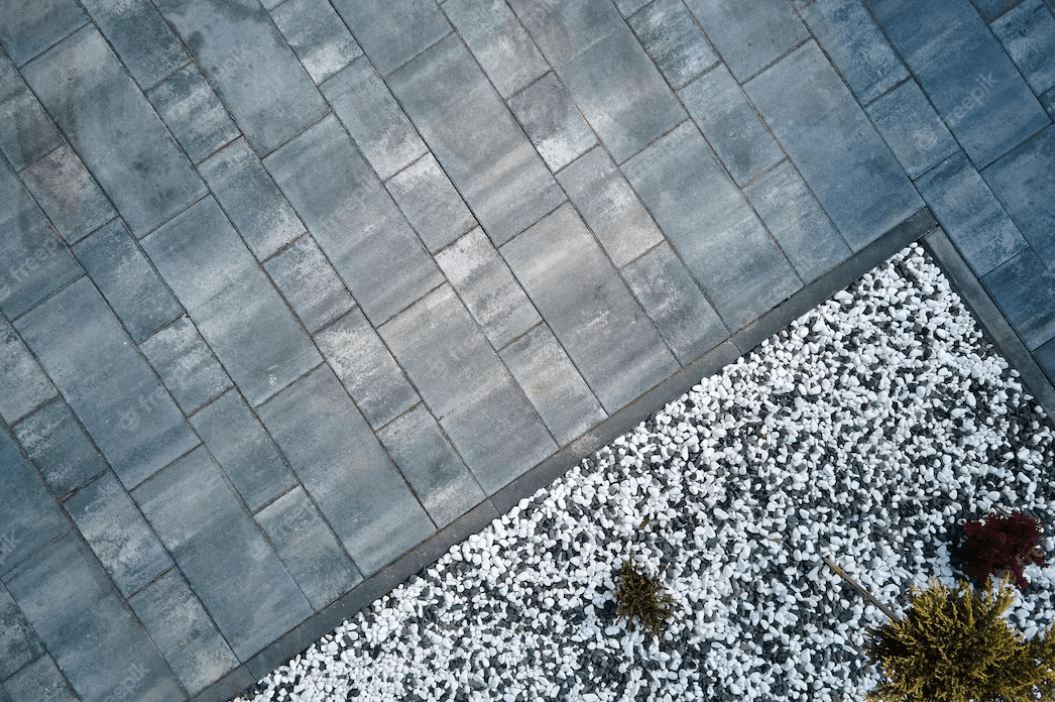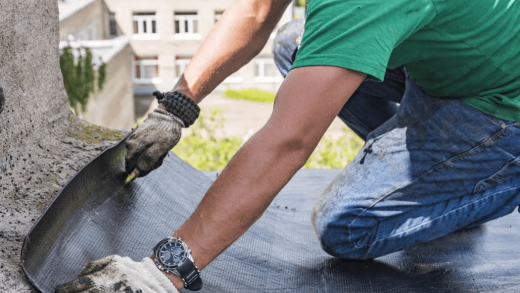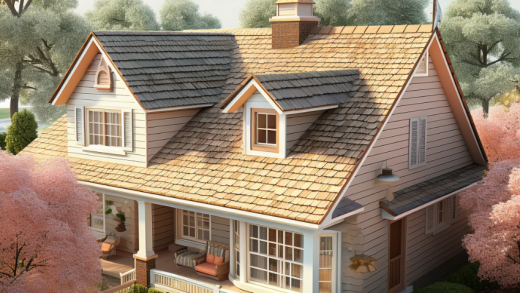Concrete Tiles – Luxurious and Resilient
If you’re looking for a roofing solution that’s both luxurious and resilient, then concrete tiles might just be the perfect option for you.
Concrete tiles have been rising in popularity as a roofing material due to their durability, weather resistance, and aesthetic appeal.
In this blog post, we’ll explore everything you need to know about concrete tiles – from what they are and how they’re made to their installation process and environmental impact. Let’s dive into the world of concrete tile roofing!
The Rise of Concrete Tiles in Roofing
Concrete tiles have been around for centuries, but it is only recently that they have gained popularity in the roofing industry. Homeowners and builders are now opting for concrete tiles due to their durability, longevity, and luxurious look.
The rise of concrete tile can be attributed to its many advantages over other roofing materials. Concrete tiles are known for their strength and resilience against harsh weather conditions like hailstorms, high winds, and heavy rains. They are also fire-resistant which makes them an ideal choice for areas prone to wildfires.
In addition to being durable, concrete tiles offer a range of aesthetic options. They come in various shapes, sizes, colors, and textures that emulate natural materials such as wood or slate. This versatility allows homeowners to customize their roofs according to their preferences while maintaining the benefits of concrete’s strength.
Furthermore, advancements in production technology make it easier than ever before to produce high-quality concrete tiles at affordable prices. Concrete roof tile manufacturers use computerized machines that ensure consistent quality throughout the manufacturing process.
The rise of concrete roof tile has been driven by its combination of functionality and aesthetic appeal – making it a top choice among consumers looking for a resilient yet visually appealing roofing material.
What are Concrete Tiles?
Concrete tiles are a popular roofing material made from a mixture of cement, sand, and water. They come in various shapes and sizes to suit different architectural styles and can be customized to match the color scheme of your building.
The production process of concrete tiles involves pouring a mold with wet concrete mixtures before they are left to dry naturally or baked in an oven for more uniform drying. The result is a finished tile that is strong enough to withstand harsh weather conditions like extreme heat, high winds, and heavy rainfall.
One significant feature of concrete tiles is their ability to last for decades without losing their functionality or aesthetic appeal. Unlike other roofing materials that may require frequent repair or replacement due to wear and tear over time, concrete tiles offer long-lasting durability and resilience.
Moreover, they provide excellent insulation against sound pollution as well as heat transfer which can help reduce energy costs by keeping the interior cool during hot weather months.
Concrete Tiles are an excellent choice for durable yet luxurious roofing solutions that promise longevity while adding value to any property.
The Production Process of Concrete Tiles
The production process of concrete tiles involves several steps. Firstly, the raw materials such as cement, sand, and water are mixed together in specific proportions to form a paste-like mixture. This mixture is then poured into molds that give shape to the tiles.
Once the mixture has been poured into the molds, it undergoes a process called curing where it is left to dry and harden for several days. After this period of time has elapsed, the tiles are removed from their molds and placed in an oven where they are baked at high temperatures.
This heating process gives them their characteristic strength and durability. Once cooled down completely, they can be painted or coated with various finishes depending on customer preferences.
It’s important to note that not all manufacturers follow the same production processes when making concrete tiles. Some may have slight variations depending on their machinery or other factors like weather conditions.
However, these steps tend to remain fairly consistent across most manufacturers producing high-quality concrete roofing tiles known for their resilience and luxurious appearance on homes and buildings alike.
The Resilience of Concrete Tiles
Concrete tiles are known for their exceptional strength and durability, making them a popular choice for roofing materials. These tiles are manufactured to withstand harsh weather conditions, including heavy rain, snowfall, hailstorms, and high winds. Moreover, they can resist fire damage and the growth of mold or algae.
The production process involves using high-quality cement combined with sand or crushed stones to form solid concrete blocks. The molds used in the manufacturing process also contribute to the sturdiness of these tiles by providing uniformity in size and shape.
In terms of longevity, concrete tiles can last up to 50 years or more with proper installation and maintenance. They require little upkeep besides occasional cleaning to remove debris that may accumulate on their surface over time.
Weather resistance is another key feature that makes concrete tiles an ideal choice for homeowners who live in areas prone to natural disasters such as hurricanes or tornadoes. Concrete roofs have been proven effective at protecting homes against wind-borne debris during extreme weather events.
If you’re looking for a long-lasting roofing material that offers excellent resilience against various threats such as harsh weather conditions and fire damage while also adding luxury appeal value to your home’s exterior design style – then consider choosing concrete roof tiles!
Durability and Longevity
When it comes to roofing materials, durability and longevity are essential factors that must be taken into consideration. Concrete tiles have been gaining popularity in the roofing industry due to their resilience when compared to other traditional roofing materials.
Concrete tiles can last for decades without showing any significant signs of wear or damage. This is because concrete is a naturally sturdy material that can withstand harsh weather conditions such as heavy rain, strong winds, and hailstorms.
Moreover, concrete tiles are resistant to fire and pests which means they won’t easily get damaged by insects or rodents like some other materials would. Additionally, they do not require regular maintenance like wood shakes or shingles might need over time.
If installed correctly with proper insulation techniques and underlayment products, concrete tile roofs can provide excellent thermal protection while also reducing energy costs by keeping homes cooler during hot summer months.
Durability and longevity are two crucial benefits of using concrete tiles as a roofing material. With proper installation and minimal upkeep requirements throughout its lifespan, homeowners can enjoy peace of mind knowing they have chosen an investment that will last for years to come.
Weather Resistance
Concrete tiles are known for their impressive weather resistance capabilities. Whether you live in an area with frequent rain or harsh winds, concrete tiles can withstand the elements without cracking or warping.
One of the main reasons why concrete tiles are so resistant to weather is because they have a low water absorption rate. This means that even if your roof is exposed to heavy rain, it won’t absorb any moisture and will remain structurally sound.
Furthermore, concrete tiles are designed to be highly wind-resistant. They are often tested against strong gusts of wind and can hold up against winds exceeding 150 mph.
Another benefit of this type of roofing material is that it’s fire-resistant. Concrete does not burn or catch fire easily, making it an ideal choice for areas prone to wildfires.
If you’re looking for a roofing material that can withstand extreme weather conditions, then concrete tiles should definitely be on your list. Their strength and resilience make them a reliable option for homeowners who want peace of mind knowing their roof can withstand whatever Mother Nature throws at it!
The Luxury of Concrete Tiles
Concrete tiles aren’t just durable and long-lasting, they also offer an undeniably luxurious look for any home. With a range of colors, textures, and finishes to choose from, concrete tiles can add a touch of elegance to any property.
One of the most appealing aspects of concrete tile roofing is its ability to mimic other premium roofing materials such as slate or clay. Whether you’re looking for a modern or traditional style, there’s sure to be a concrete tile that suits your taste.
Additionally, the weightiness and texture of these tiles make them feel more substantial than other lightweight roofing options like metal or asphalt shingles. This adds value not only in terms of aesthetics but also functionality since heavier materials tend to withstand harsh weather conditions better than their lighter counterparts.
Moreover, concrete tiles are made with natural materials which further enhances their luxurious appeal. By choosing this type of roof over synthetic alternatives like plastic or composite materials, you will achieve both beauty and sustainability while avoiding toxic waste production during manufacturing operations.
If you’re looking for a roof material that combines luxury with durability, then consider installing Concrete Tiles on your house!
Installation of Concrete Tiles
When it comes to installing a concrete tile roof, it’s important to have an experienced roofing contractor who is familiar with the unique requirements of this type of roofing material. The installation process usually starts with preparing the surface for the tiles.
First, a layer of felt paper is laid down over the roof deck. Then, metal flashing is installed around any protrusions or transitions in the roof line to ensure water doesn’t penetrate under the tiles.
Next, battens are installed horizontally across the roof deck and spaced apart according to manufacturer’s specifications. The concrete tiles are then secured onto these battens using nails or screws.
One thing that sets concrete tile installation apart from other types of roofing materials is that each individual tile must be carefully aligned and leveled in order to create a uniform appearance on the finished product.
Ridge caps are installed at peaks and hips where two different sections of roof meet. These pieces help prevent water from entering through gaps between tiles while providing an attractive finishing touch to your new concrete tile roof.
Maintaining Concrete Tiles Roof
Maintaining a concrete tile roof is crucial in ensuring its longevity and resilience. Regular maintenance can prevent damage caused by dirt, debris, and weathering.
One important aspect of maintaining concrete tiles is to keep them clean. This can be done by using a hose or pressure washer to remove any built-up debris such as leaves or branches. It’s important not to use harsh chemicals that could damage the tiles.
Inspecting the roof for cracks or other damages should also be part of the maintenance routine. Any damages found should be repaired promptly before they become bigger issues.
Another key factor in maintaining a concrete tile roof is proper ventilation. Adequate ventilation helps prevent moisture buildup, which could lead to mold growth and other problems.
It’s essential to hire professional contractors who specialize in repairing and maintaining concrete tile roofs if you’re unsure about how best to maintain your own roof.
By following these tips, homeowners can ensure their concrete tile roofs remain durable and long-lasting for years to come while adding value and beauty to their properties.
The Environmental Impact of Concrete Tiles
Concrete tiles are not only luxurious and durable, but they also have a positive impact on the environment. Unlike other roofing materials that require frequent replacements, concrete tiles can last for up to 50 years or more, reducing waste in landfills.
The production process of concrete tiles involves minimal energy consumption, making it an eco-friendly option. The manufacturing process generates less heat compared to traditional clay tile production methods. In addition, many manufacturers use recycled materials such as fly ash and glass to produce concrete roof tiles instead of disposing of them in landfills.
Moreover, the thermal mass properties of concrete roofs contribute to energy efficiency by keeping homes cool during hot weather and warm during cold weather. This reduces the need for air conditioning systems and heating units, which consume significant amounts of energy.
Since concrete is non-combustible, it provides excellent fire resistance qualities compared to other roofing materials such as wood shakes or asphalt shingles, which may increase the risks of fires spreading rapidly within a neighborhood.
Choosing concrete tiles over other traditional roofing options can significantly reduce your carbon footprint while providing a long-lasting roofing solution with low maintenance requirements.
Comparing Concrete Tiles with Other Roofing Materials
When it comes to choosing the right roofing material for your home, there are several options available in the market. Each has its own advantages and disadvantages. Let’s take a look at how concrete tiles compare with other popular roofing materials.
Firstly, let’s consider asphalt shingles – they’re affordable, easy to install, and come in a wide variety of colors. However, they don’t have the longevity or durability that concrete tiles offer.
Metal roofs are another option that homeowners consider due to their long lifespan and energy efficiency. However, metal roofs can be noisy during rainfall and suffer from corrosion if not maintained properly.
Clay tiles may look similar to concrete tiles, but they’re considerably more expensive. They do offer better insulation than both metal and concrete roofs though.
Slate is known for being one of the most durable roofing materials out there, but it also comes with a hefty price tag.
While each material has its pros and cons, when comparing them side by side – Concrete Tiles stand out as an excellent choice for those seeking luxury & resilience while keeping costs low in comparison to others like clay or slate.
Cost of Concrete Tiles Roofing
When it comes to roofing materials, cost is always a factor to consider. Concrete tiles may seem like an expensive option at first glance, but their durability and longevity make them a worthwhile investment in the long run.
The cost of concrete tile roofing varies depending on several factors such as the size of your roof, type of concrete tile, installation costs, and other related expenses. Generally speaking, concrete tiles are more expensive than traditional asphalt shingles but cheaper than premium roofing options such as metal or slate.
Concrete tiles are known for their low maintenance and long lifespan, which means that they can save you money in repair costs over time. Additionally, because they are energy-efficient and have high insulation values compared to other roofing materials, this translates into lower heating and cooling bills year-round.
Installation costs for concrete tile roofs also vary based on location but generally range between $400-$1000 per square foot installed – much less if you’re doing it yourself!
While the upfront cost may be higher with concrete tiles, their durability and longevity make them a smart choice in terms of overall value for your home’s roof.
Case Studies: Successful Implementation of Concrete Tiles
Concrete tiles have been a popular roofing material for decades. Many homeowners and businesses have implemented this type of roofing system due to its durability, longevity, and weather resistance. In fact, there are numerous successful case studies that showcase the effectiveness of concrete tiles in various applications.
One example is the installation of concrete tiles on a historic building in downtown Los Angeles. The project required a durable roofing solution that could withstand harsh weather conditions while still maintaining the building’s original architectural aesthetics. Concrete tiles were chosen due to their ability to replicate traditional clay or slate roofs while offering superior durability.
Another successful implementation of concrete tiles was at a luxury resort in Hawaii. The resort needed an aesthetically pleasing yet durable roofing solution that would complement its tropical surroundings while also withstanding strong winds and heavy rainfall during hurricane season. Concrete tiles were able to provide both beauty and resilience, making them an ideal choice for this project.
A commercial warehouse facility in Florida utilized concrete tiles for its roof replacement project due to their ability to withstand extreme heat and humidity without deteriorating over time. This helped reduce maintenance costs as well as improve energy efficiency by reflecting solar radiation away from the building.
These case studies demonstrate the versatility and effectiveness of using concrete tiles for various roofing applications across different industries and settings.
The Future of Concrete Tiles in Roofing
The future of concrete tiles in roofing looks bright. As more people become environmentally conscious, they will turn to sustainable materials like concrete to build their homes. Concrete tiles are not only durable and weather-resistant but also have a luxurious appearance that is unmatched by other roofing materials.
With advancements in technology, the production process of concrete tiles has become even more efficient, resulting in lower costs for consumers. These cost savings will make it easier for homeowners to choose the long-lasting benefits of concrete over alternatives such as asphalt shingles or metal roofs.
In addition, architects and designers are finding new ways to incorporate concrete into modern home designs. From sleek flat tile patterns to textured options that mimic natural stone, there is no limit to the creative possibilities with this versatile material.
As climate change continues to affect our planet, having a resilient roof becomes even more important. With its ability to withstand harsh weather conditions including high winds and heavy rainfall, it’s likely that we’ll see an increase in demand for concrete tiles as extreme weather events become more common.
The future looks promising for this resilient and luxurious roofing material. As technology continues to improve and sustainability becomes a top priority for homeowners worldwide, we can expect continued growth and innovation within the industry.
Conclusion
To sum up, concrete tiles have rapidly gained popularity in roofing due to their resilience and luxury. They are produced through a process that ensures durability and weather resistance. The installation of these tiles is easy, and maintenance is minimal.
Compared to other roofing materials, concrete tiles stand out for their longevity and eco-friendliness. Homeowners can save money in the long run by investing in a concrete roof as it requires little repair or replacement.
Concrete tile roofs provide not only an aesthetically pleasing appearance but also add value to your home. With proper installation and maintenance, they can last for decades without losing their beauty or functionality.
So if you’re looking for a luxurious yet resilient roofing material that’s both environmentally friendly and cost-effective in the long term, then consider choosing concrete tiles for your next roofing project!




